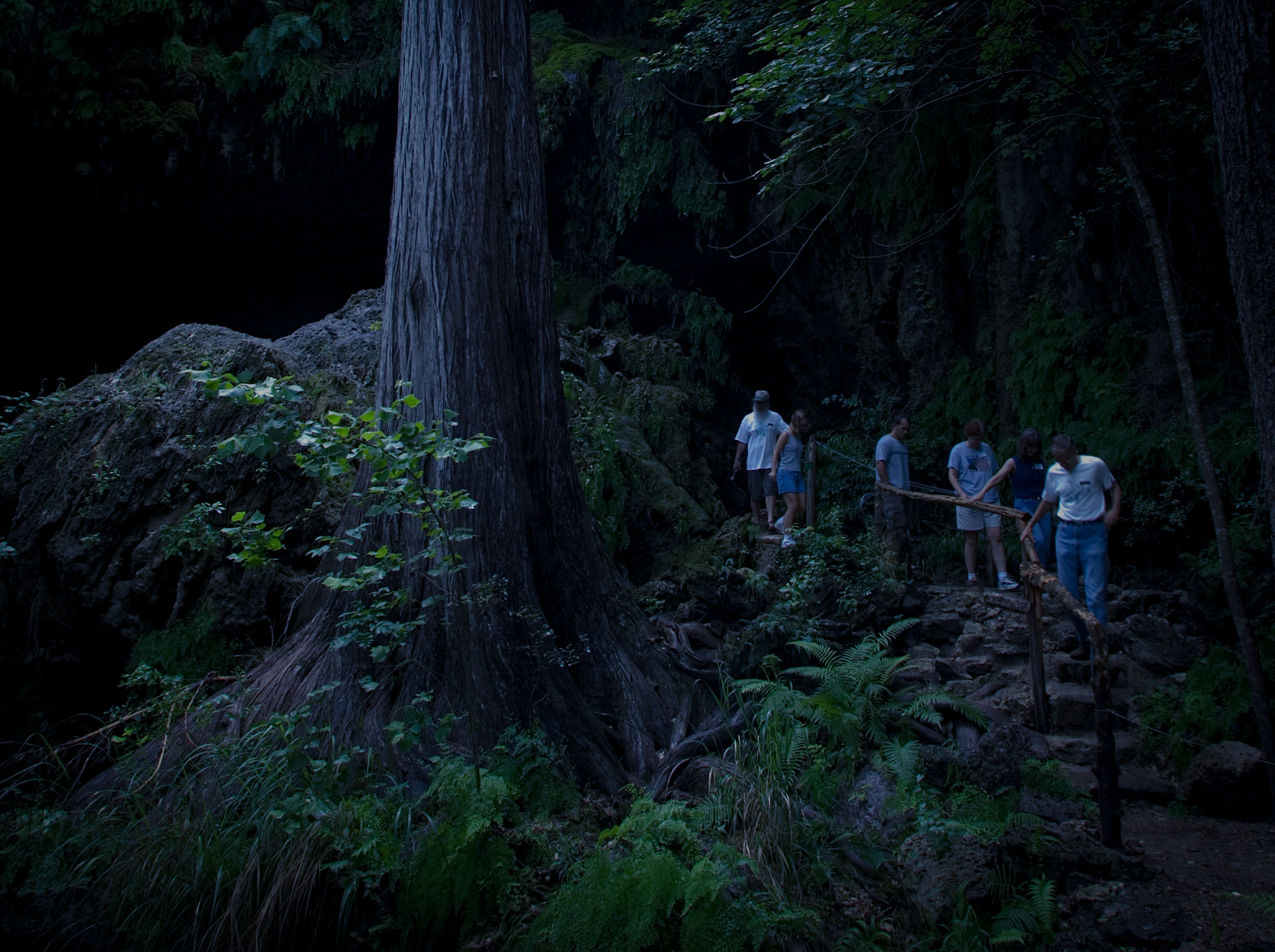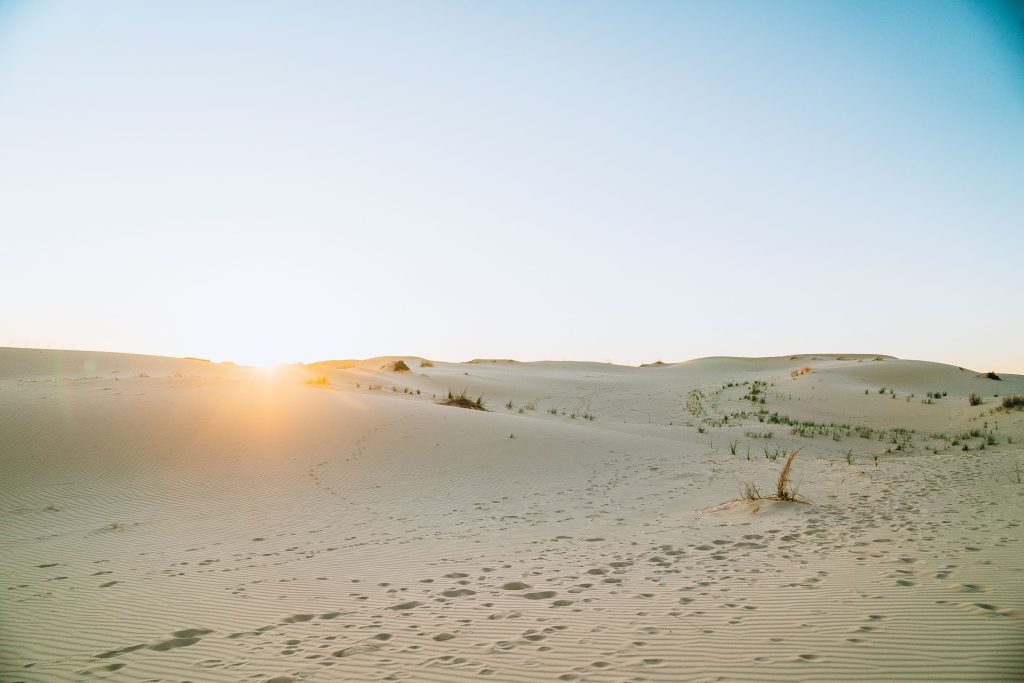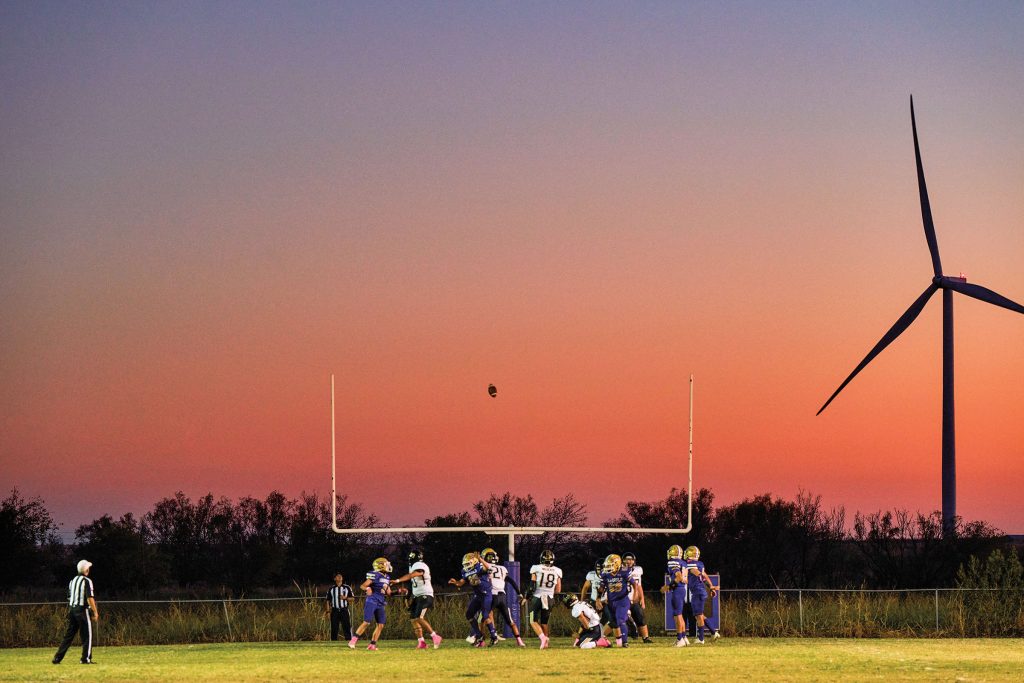
Hikers can explore the Westcave Outdoor Discovery Center at night. Photo by Michael A. Murphy
The sun has just slipped below the tree line as we begin our hike at the Cibolo Nature Center in Boerne. The tops of the oak trees behind us are tinged with orange, and crickets chirp in the grass. Standing at the trailhead, I feel a ripple of anticipation for our adventure, a behind-the-scenes tour of the Cibolo’s nocturnal world.
The center is located about 30 miles northwest of downtown San Antonio via Interstate 10, and on this April evening, 10 of us have joined nature education director Noah Lawrence to explore the Cibolo’s trails after dark. The site is one of many parks and preserves around the state that offer guided night hikes, and I’m curious to contrast the experience with hiking during the day.
A few of us have brought headlamps or flashlights, and Lawrence lets us know he has a first-aid kit and binoculars. Otherwise, our journey is light on gear. It begins in the Cibolo’s woodland, where we walk through a tunnel of oak trees cloaked with ball moss. That moss has a doppelganger, Lawrence tells us: porcupines, which, in the Texas Hill Country, primarily live in trees. Just a few weeks ago, an animal rehab organization relocated a porcupine from an apartment complex parking lot to the Cibolo, where he immediately climbed a tree. We peer into the woods, searching unsuccessfully for a giant clump of moving ball moss.
We continue past Ashe juniper and persimmon trees draped with greenbrier as the daylight fades. I notice it feels vaguely transgressive to begin a hike at the time of day I’m normally hustling to finish one. Gradually, the darkness thickens between our group and the surrounding forest, and we can no longer see more than a few feet around us.
Lawrence stops on an embankment above Cibolo Creek, which takes its name from an Apache word for buffalo. It’s too dark to see the creek, but we can hear running water burbling below us and make out the last vestiges of daylight reflecting off its surface. Giant bald cypress trees, hundreds of years old, stand silhouetted against the star-speckled sky. A red-shouldered hawk nests in one, barred owls in another. Lawrence hoots a barred owl call into the dark—“Who cooks for you? Who cooks for you all?” As we listen for an answer, we hear the lively chirping of tiny, quarter-size cricket frogs, whose call Lawrence aptly describes as the sound of two marbles clicking together.
We walk a little farther before he stops and points to the ground. “If you have a light at night and you see what looks like little gems sparkling,” he says, “that’s going to be wolf spiders in the grass and underbrush.” I find that I’m reluctant to turn on my headlamp—I’m enjoying being enveloped in darkness, and light feels intrusive—but when I do, a dozen tiny emeralds glitter at my feet.
From the creek, we continue into the tallgrass prairie, where faint rustling sounds suggest small animals darting into the brush. Lawrence shows us a tablet connected to a small handheld device called an echometer. Insectivorous bats in Texas use echolocation to find their food, making tiny clicking sounds that bounce off potential prey and then following those signals to hunt. The echometer detects those bat signals, which are at frequencies we can’t hear, and the tablet displays their frequency ranges, allowing us to “see” the sounds on a constantly scrolling graph.
Lawrence raises the echometer toward the sky, and immediately the tablet’s display is filled with checkmarks and swooshes that represent bat calls. Each species of bat has a slightly different signal. An experienced bat watcher can distinguish these calls based on their frequency range, but an app identifies them for neophytes. Tonight is a big night for tricolored bats and Mexican freetails, Lawrence says, noting that during other night hikes he also has seen calls by hoary bats, yellow bats, eastern red bats, little brown bats, and pallid bats.
We head toward the property’s spring-fed marsh as the Big Dipper hangs low and bright before us. A boardwalk leads to a wide platform over the water, where Lawrence invites us to rest. “One of my favorite ways to experience the marsh is just to sit and listen,” he says, and we obediently take a seat on the backless benches. After a moment of stillness, the marble-clicking chirp of a cricket frog begins. As though given permission by this first frog, the chirping grows until it’s a chorus that echoes in all directions.
After a little over 90 minutes of hiking, we head back to the parking lot. In the absence of dramatic animal sightings—porcupines, bobcats—I’m grateful for Lawrence pointing out details like frog chirps and spider eyes. Curious to see how other hikers feel after the experience, I visit with San Antonio residents Hannah and Bryan Morales. Hannah calls the night hike “magical.”
“As dusk set in, it was almost like that second phase of life coming out that I never really see,” she says. “Night is a very reflective time, too—there’s a second phase of emotions and the self that is only awake at night, so being in nature at night is a way to engage that.”
“Hiking at night allows you to use more of your senses,” Bryan adds. “During the day, so much is focused on sight, whether that be [looking at] ads, driving, TV, phones; even with hiking, you’re looking at trees, flowers, animals, bugs. One of the things I enjoyed most about walking at night was the sounds of the frogs, the different fresh smells, and hearing the water.”
The Cibolo offers night hikes because it’s “cooler” to visit the trails after dark, Lawrence says. Meaning, hiking at night avoids the summer heat; plus, it’s a novel way to experience the outdoors. Lawrence says that, on the hike he led after the one I attended, the group saw porcupines, armadillos, and owls—a comparative bounty of wildlife next to our spiders and frogs. But I don’t feel particularly deprived. Nature doesn’t perform on humans’ timetable. The sense of slipping behind a curtain into a secret world, and the surprising comfort I felt in the darkness, are enough of a reward.
Wait Until Dark: 5 Cool Night Hikes
Landmark After Dark
The Lubbock Lake Landmark archaeological and natural history preserve offers monthly night hikes through September. First-time visitors can travel with a guide—the group hike starts 30 minutes before sunset—while frequent hikers usually opt to explore the 336-acre preserve on their own. Night hikers have access to the preserve’s 3.5-mile trail that covers rolling grassland terrain and two half-mile trails, one of them an ADA-accessible boardwalk. Guests may spot coyotes, burrowing owls, prairie dogs, and Texas horned lizards. The very popular night hikes draw as many as 200 people (no reservations or fee required). Kids are welcome to attend; no dogs, please.
Baytown Nature Center Full Moon Hikes
The Baytown Nature Center offers hikes on the Saturday closest to the full moon all year long. Hikes are guided, cover about a mile and a half, and last 90 minutes to two hours. Guides point out raccoons, possums, and owls, as well as rabbit tracks and coyote scat. Hikes are free with park entry ($4 adults, $1 kids) and are geared toward ages 5 and up.
Westcave Outdoor Discovery Center Night Hikes
The Westcave Outdoor Discovery Center, 31 miles west of downtown Austin on Hamilton Pool Road, offers night hikes on the half-mile trail to the preserve’s grotto. Guides accompany the group and point out frogs, spiders, and bats, but hikers can explore at their own pace within the trail system. Most people stay about 90 minutes. The hike is not geared toward young children. Reservations are required ($25 per person).
Bonham State Park Night Creatures Hike
Bonham State Park, 90 minutes northeast of Dallas, offers Night Creatures hikes on the second Friday of each month. Listen for owls, coyotes, salamanders and frogs, and look for fireflies, scorpions, bats, beavers, raccoons, and bobcats. The hike is for all ages, lasts an hour, and covers between a quarter mile and three-quarters of a mile. Hikes start at 8 p.m., run April through October, and are free with park admission ($4 age 13 and up).
Cibolo Nature Center
The Cibolo Nature Center offers night hikes for adults as well as family hikes to accommodate, as the website explains, “short legs and short attention spans.” Adult hikes cost $15 per person, and family hikes are $30 per family. The center is taking a hiatus for night hikes in June and July but will resume them in August.






